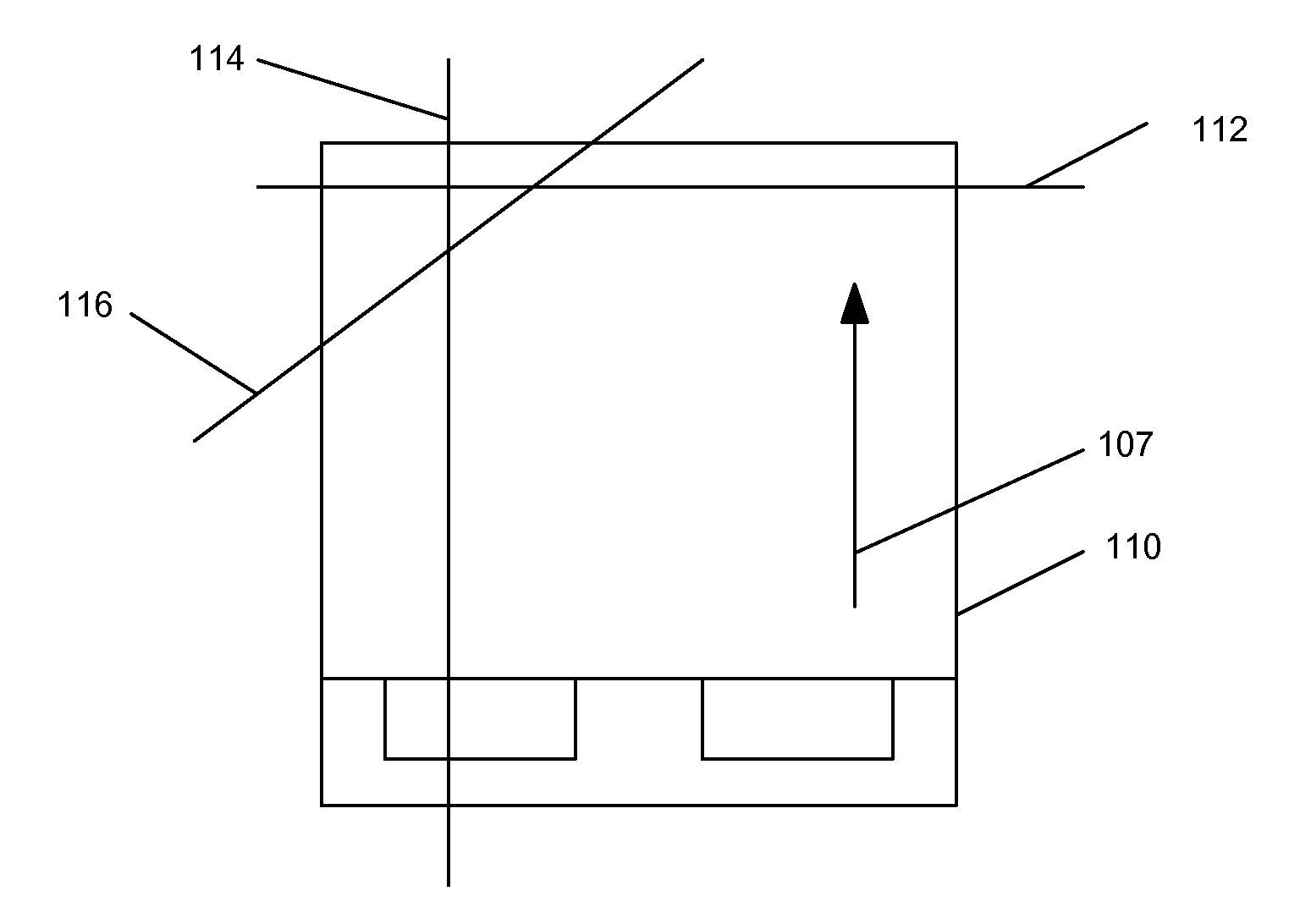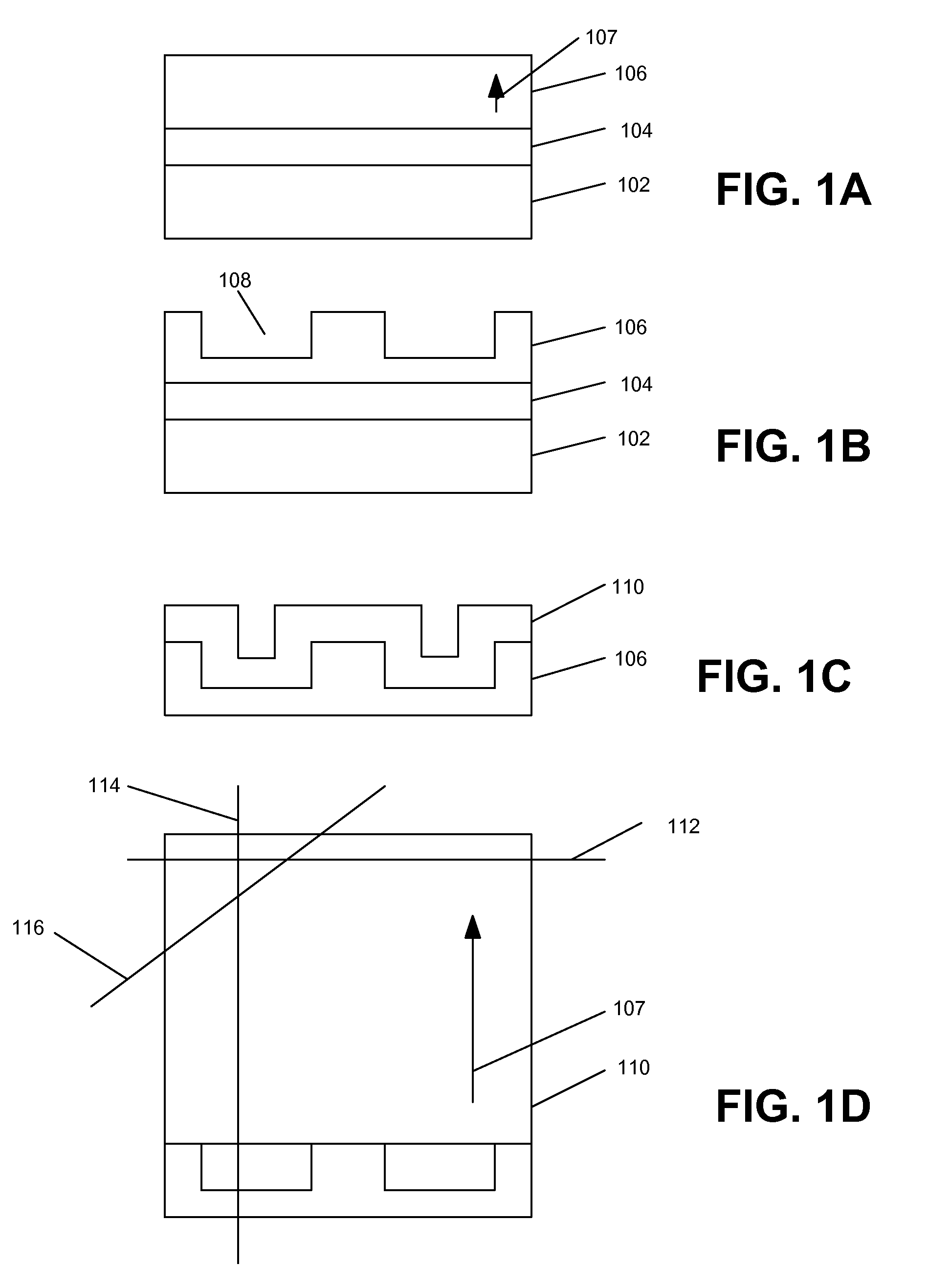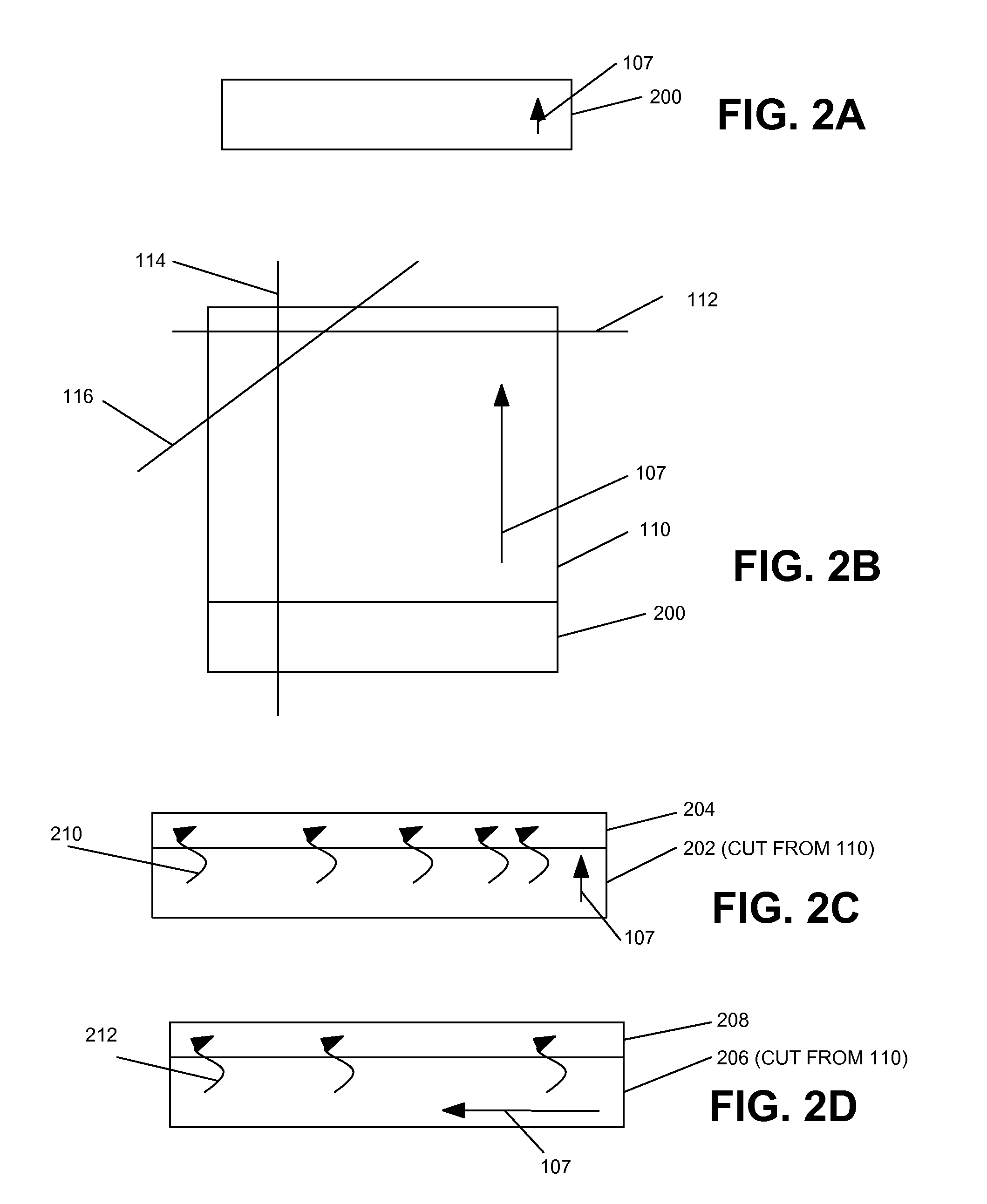Hexagonal wurtzite type epitaxial layer possessing a low alkali-metal concentration and method of creating the same
- Summary
- Abstract
- Description
- Claims
- Application Information
AI Technical Summary
Benefits of technology
Problems solved by technology
Method used
Image
Examples
Embodiment Construction
[0044]In the following description of the preferred embodiment, reference is made to the accompanying drawings which form a part hereof, and in which is shown by way of illustration a specific embodiment in which the invention may be practiced. It is to be understood that other embodiments may be utilized and structural changes may be made without departing from the scope of the present invention.
OVERVIEW
[0045]The present invention provides a low impurity hexagonal würtzite type epitaxial layer, and more specifically, a low alkali-metal epitaxial layer, grown on a hexagonal würtzite substrate. The present invention also describes a technique for minimizing the alkali-metal incorporation into the epitaxial layer.
[0046]A method for growing III-nitride crystals in supercritical ammonia has been proposed and demonstrated. This method is expected to produce bow-free GaN substrates containing low structural defect densities in a cost-effective manner. One potential drawback of this approa...
PUM
 Login to View More
Login to View More Abstract
Description
Claims
Application Information
 Login to View More
Login to View More - R&D Engineer
- R&D Manager
- IP Professional
- Industry Leading Data Capabilities
- Powerful AI technology
- Patent DNA Extraction
Browse by: Latest US Patents, China's latest patents, Technical Efficacy Thesaurus, Application Domain, Technology Topic, Popular Technical Reports.
© 2024 PatSnap. All rights reserved.Legal|Privacy policy|Modern Slavery Act Transparency Statement|Sitemap|About US| Contact US: help@patsnap.com










